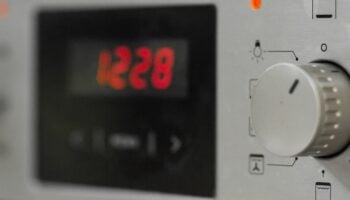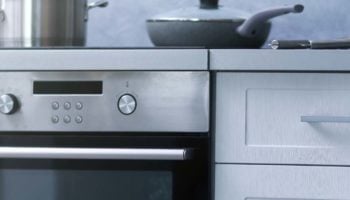Your oven won’t turn off, no matter what you do?
You’re not alone! The issue affects thousands of people worldwide daily.
An oven that does not switch off presents many hazards in terms of fire outbreaks and increased energy consumption.
But don’t worry; you’ve come to the right place for answers. Below, I’ve prepared a detailed article providing relevant and reliable information about possible reasons why your oven won’t switch off.
Ready to dive in? Let’s go!
7 Reasons Why Your Oven Refuses To Switch Off
A Defective Control Board
The control board is the part of your oven containing relays in charge of sending voltage to the bake and broil elements based on the user settings and the sensor input. If there’s an issue with one of the relays, the control board will send continuous voltage to the oven’s heating circuit.
If the oven stays on even after switching off, the problem might be that the control board is defective, in which case, it will need replacing.
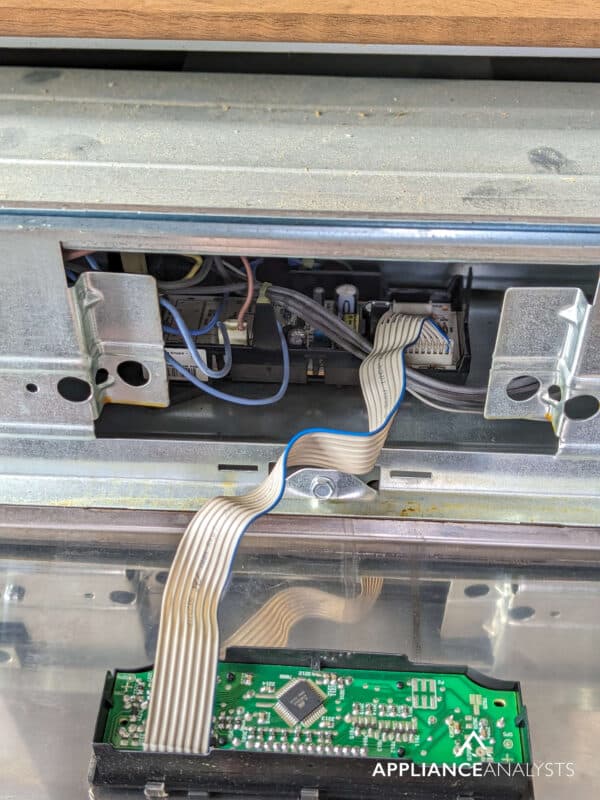
A Faulty Relay board
A failed relay board could also explain why your oven won’t turn off. Some ovens are fitted with relay boards with numerous layers controlling the voltage in the heating element.
The relay board receives signals from the control board in the control panel and gives feedback by closing and opening relays and managing the oven’s voltage. From what I’ve seen, the relay board sends continuous voltage to the heating element when one of the layers fails.
In cases of a faulty relay board, you’ll need a replacement. Provided you’re not sure how to go about the replacement, please contact a professional for help.
A Bad Broil Element
Broil elements are fitted at the top of your oven and used for well… broiling. Broil elements can sometimes be used to preheat the oven before starting the actual cooking. In my experience, a bad broil element could explain why your oven won’t turn off.
In an oven, the boiler pans collect excess fat from various dishes, preventing foods like steak from soaking in too much fat. You can also prepare vegetables, cinnamon toast, and cheese toast in the broil element.
When the broil element shorts out, it will be visibly damaged, and your oven likely won’t turn off. It’s best to inspect the broil element for possible damage before cooking any further.
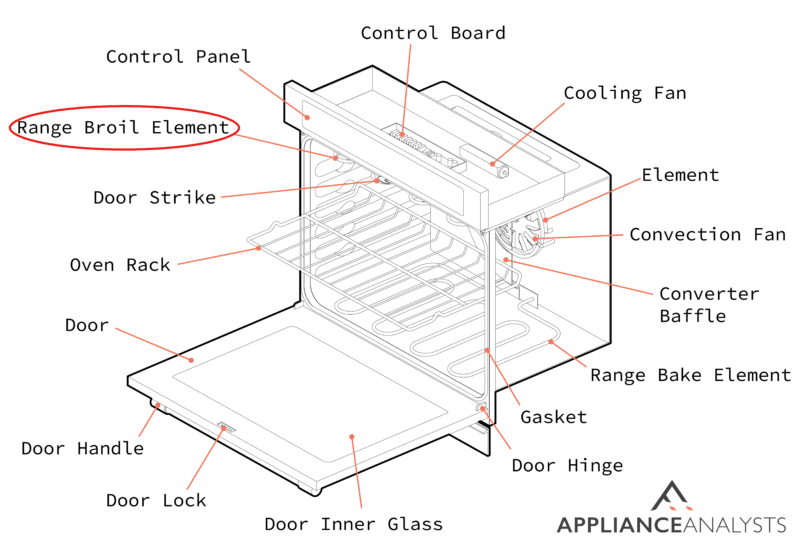
Provided the broil element seems fine but is acting strange, you can use a multimeter to test it for continuity. No continuity means there’s something wrong with the broil element, and you’ll need to start looking for a replacement.
A Bake Element
If the heating element burns out, it could also explain why your oven won’t turn off. As with the broil element, I usually advise waiting for the oven to cool down completely and then looking for any visible damage in the heating element.
If you see none, you can repeat the broil element’s multimeter test and check for continuity.
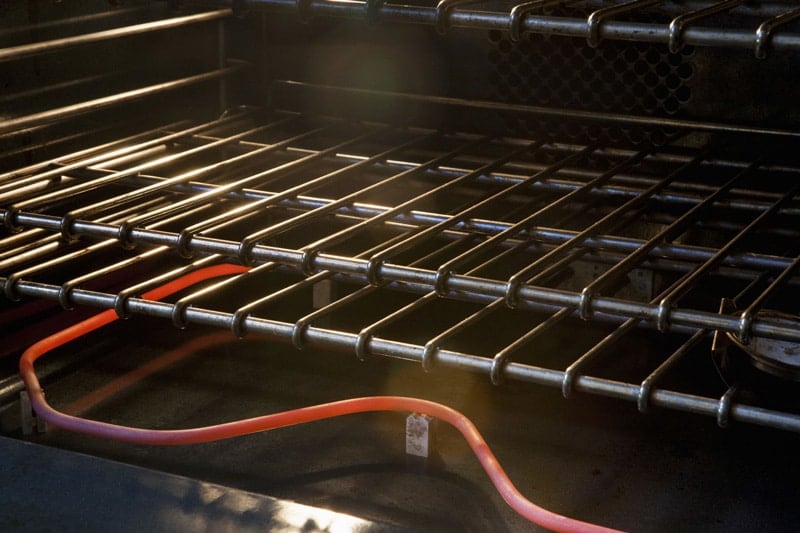
A Surface Element Failure
Like other elements inside your oven, the surface components of a range can short out. If the electrical contact fuses, resulting in a constant voltage to the burner, the surface element will require replacement. Such issues will keep your oven from turning off.
The best way to resolve the issue is first to conduct an inspection. Unplug the oven from the socket and allow it to cool down. Inspect carefully for possible damage or wear and tear. If there is no identifiable damage, swap the malfunctioning burner with a properly functioning one.
A Failing Surface Element Switch
The surface element switch serves as the control thermostat for… well, the surface elements! The surface elements tell the oven how hot it should get and when to turn on and off. If the contacts within the surface element fuse, it would explain why your oven won’t turn off.
To solve the issue, refer to your oven’s user manual to locate the surface element switch.
Once you do:
- Unplug the oven, allowing it to cool.
- Inspect the switch for possible damage.
- If damaged, the best alternative is to replace the switch.
A Broken Knob
Sometimes an oven that won’t turn off can be blamed on a broken temperature knob. A cracked or broken knob cannot turn the temperature control stick off, and despite the knob turning and appearing to be off, the burner will remain on until the temperature control stick turns off.
To check the knob, remove it and try turning it off manually. Use a pair of needle nose pliers to turn the temperature control off, and if it works, consider replacing the knob. Avoid using your oven without a knob, as the empty space can allow moisture to damage the electronics.
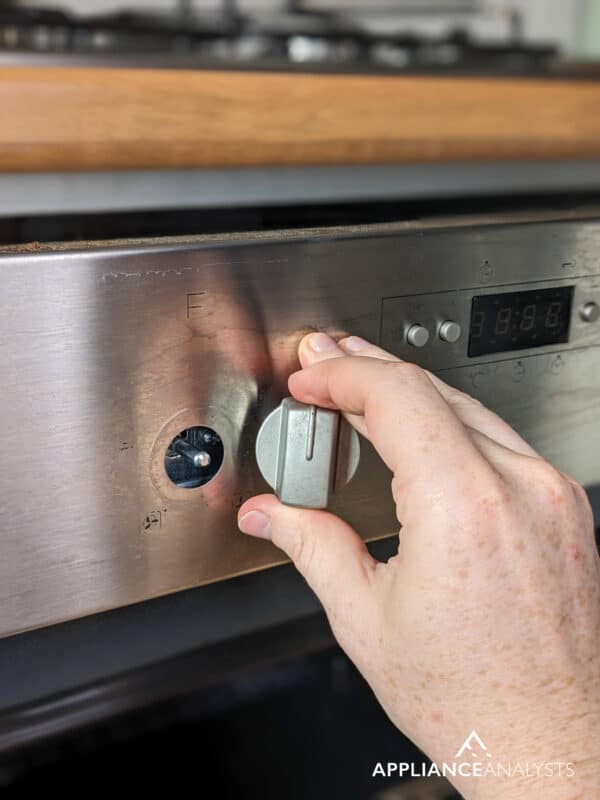
Why Is My Oven Hot Even After Turning It Off?
Moving on, let’s now discuss why your oven remains hot even after turning it off. There are many possible reasons behind the situation, which will be discussed in detail below.
A Malfunctioning Temperature Sensor
The oven usually has a temperature sensor that determines and monitors the temperature. If the sensor becomes faulty, you might see a warning message on the oven control board. To resolve the issue, you must replace the faulty sensor with a fully functioning one.
A Faulty Thermostat
A thermostat in an oven helps detect temperatures within the appliance. The thermostat also controls the heating components depending on the oven temperature settings. However, when the thermostat malfunctions, it won’t do its job properly, resulting in continuous heating of the oven.
To fix your oven’s thermostat:
- Disconnect the oven from the power outlet and let it cool down completely.
- Remove the control knob and carefully disconnect the thermostat from the wiring in the oven. Also, take off the thermostat capillary tubes from the oven. Push the tubes carefully through the opening, either on top or to the back, and remove the old thermostat.
- Take the new thermostat, thread the capillaries through the oven wall, and set it properly. Reattach the wires to the new thermostat, inserting the mounting screws in place.
- Replace the temperature regulating knob on the new thermostat.
A Defective Control Board
Your oven’s control board is responsible for sending voltage to the break and broil elements based on the user settings. When the board malfunctions, it can keep your oven hot after turning it off by continuously sending voltage to the heating element.
If you suspect your control board is faulty, my usual advice is to replace it.
Reasons Why Your Oven Light Won’t Turn Off
While oven lights that do not turn off do not pose any danger, they’re a nuisance and waste energy. Below are some reasons why your oven light won’t turn off.
The Oven Light Switch Is On
One of the common reasons why oven lights aren’t turned off is that the oven switch is on. Ensure you switch off the oven light before panicking and finding complex problems that do not exist.
The location o the oven light switch depends on the oven model. If you’re unsure, refer to your user manual for a detailed description of the switch’s location.
Unseated Door
The oven door ought to connect to the door light switch. However, when this does not happen, the light remains on. To check for the issue, open the oven door and press the switch-off button; if the light turns off, the door has an issue and needs to be replaced.
While replacing, check to see if the door springs are broken, worn out, or have rust and replace them too.
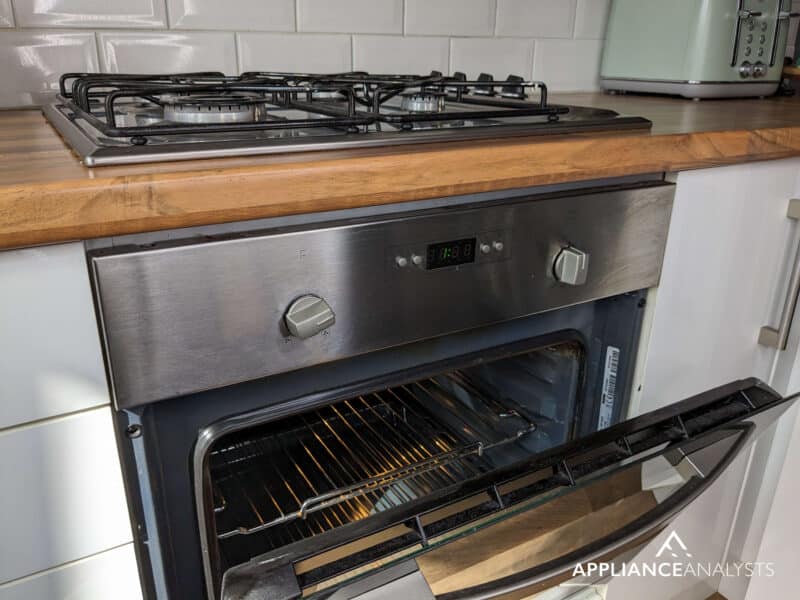
A Malfunctioning Door Light Switch
Most oven models are fitted with manual and door light switches. If the door light fails, but when turned off manually, it works, it could explain continuous lighting issues. You likely need to replace the door light switch in such a case.
If you want to get any replacement part – or see how much one would cost – click to enter your model number in the search bar below. Our partners at AppliancePartsPros stock almost every part with free guides on how to install them.

Addressing an Oven That Won’t Turn Off
If your oven won’t turn off, don’t panic. Examine the possible causes, such as issues with the thermostat or the heating element. Then implement the necessary measures to resolve the issue.
Remember never to ignore or leave such an issue unaddressed, as it could pose a fire hazard and increase your electric bills.
Thanks for reading. If this article was informational and helpful, please consider checking out our other resources below and subscribing to our newsletter.
Happy baking!
-Craig.






